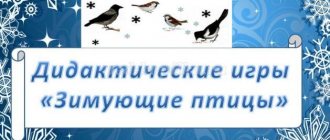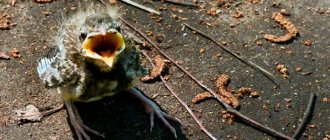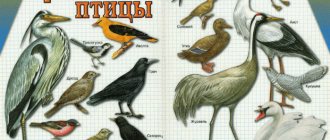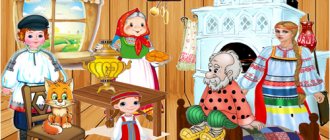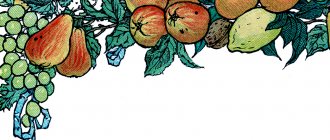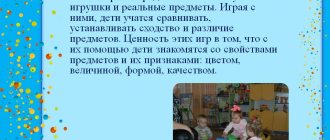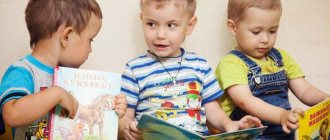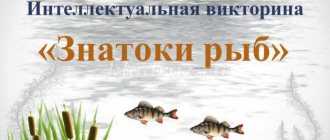Bird reproduction and development
Birds are dioecious. The reproductive organs of a male are 2 testes; in female birds, there is 1 left ovary and an oviduct.
The reproduction and development of birds, as well as that of reptiles, occurs on land.
What features can be noted in the reproduction of birds?
The breeding season of birds begins in the spring with the formation of pairs. Males attract the attention of the opposite sex with spring singing. After a pair is created, the process of bird reproduction or mating occurs.
Mating season of pigeons
The reproduction of birds and reptiles is similar in many ways. Fertilization in these classes of animals is internal, and reproduction occurs with the help of eggs.
A feature of bird reproduction is the formation of eggs covered with a hard shell. After fertilization, the development of the bird embryo begins, a shell of protein is formed around the yolk. In turn, the protein is covered with a subshell shell and a hard calcareous shell. As a result, an egg is formed. Let's get acquainted with the structure of a bird's egg in the figure.
The rapid growth and development of the bird embryo occurs only after the egg is laid and the animals begin incubation.
During the breeding season, many birds begin to build a nest for future chicks. Bird nesting structures can be primitive or can be complex structures. The shape and material used for construction are varied.
The female lays eggs in a nest, which are incubated by both parents in turn. In some species, such as chicken and duck, one female incubates the eggs. The incubation period for eggs can last from 13 days in small birds to 2 months in birds of prey.
According to the type of development, birds are divided into brood and nesting birds.
Breeding birds include cranes, waders, gulls, and swans. According to the type of development, domestic birds - geese, chickens, ducks - also belong to brood birds. Breeding birds include passerines, birds of prey, woodpeckers, and pigeons.
Lifestyle
When studying the bird fauna of any area, one can note the variability of its composition at different times of the year. In fact, very few birds live with us both winter and summer. This is largely due to seasonal changes in the lives of birds. In this regard, according to their lifestyle, all birds can be divided into three groups: sedentary, nomadic and migratory.
After winter comes a revival in nature. With the arrival of spring, significant changes occur in the lives of birds. Migratory birds return from wintering grounds.
For life, birds choose areas with favorable conditions, organizing nesting in the same place year after year. Here the male begins to sing, luring the female, and notifying others that the place is occupied. Birds, when choosing their life partners, attach great importance to the color of their plumage. Therefore, males have brighter colors to attract females.
Many people choose a pair for one season. However, birds are known in which pairs form for a long period or for life. For example, storks, herons, swans and birds of prey.
After the pair is formed, a crucial period begins. In the life of birds, spring is the time for breeding, and then caring for the offspring. To do this, they begin nest-building, laying eggs and raising chicks.
Caring for offspring: a penguin protects a chick from a petrel
In wildlife you can observe very interesting moments from the life of birds. For example, bird markets are of great interest. A striking example of such social life is the mass nesting of birds in the north. Birds live in a colony and work together to protect their young from predators. Such collective life makes it possible to preserve offspring, protect themselves from predators, and thereby increase the life expectancy of birds.
Bird market in Kamchatka
After spring and summer come the first cold days. The life of animals and birds in the fall is aimed at preparing for the winter cold. Birds that cannot find food in the cold fly away to warm countries. It is generally believed that birds fly south. Bird ringing has shown that many of them fly to the west and southwest. The autumn flight of birds is extended over time. It lasts about three months.
The first snowfall in autumn causes anxiety among birds. The first changes in the way of life of birds are taking place. Sedentary birds switch to coarse, low-nutrient woody food - buds, shoots and needles. Many birds migrate for the winter closer to populated areas. Nomadic birds begin to appear.
Nomadic birds - waxwings
It is difficult for all living things in this harsh season of the year. The cold hinders the movements of birds. Lack of food and death of forest inhabitants are often observed. It is within our power to take care of our feathered friends and organize feeding. It’s not difficult to make a simple feeder and hang it out the window in the yard, garden or park. We will save many birds from hunger and help them survive until the first warm days of spring.
Sparrows and tits at the feeder
Birds will not remain in debt, because they bring great benefits to humans. The positive significance of birds in human life lies in the destruction of insects and rodents - agricultural pests. Such useful birds include all insectivores, such as tits, nuthatches and others. It is impossible not to say about woodpeckers, which eat harmful insects: bark beetles, click beetles, golden beetles, etc.
White-backed Woodpecker
Owls and owls are considered energetic hunters of mouse-like rodents. Birds of prey also destroy mice: buzzard, kestrel, harrier, etc.
Gray owl with prey
Birds are of great economic and commercial importance. Some birds provide tasty meat (hazel grouse, black grouse, wood grouse, ducks, etc.), while other birds provide valuable feathers (eiders, loons, geese).
Representatives of the chicken and anseriformes orders are domesticated. Poultry farming is a large livestock industry that supplies food.
Poultry meat is very nutritious and tasty. Chicken eggs are a valuable food product.
Chickens at a poultry farm
The importance of birds in nature is also very significant. Birds, as already mentioned, regulate the number of living organisms. Sometimes birds themselves serve as food for other animals, being a link in the food chain.
Without these animals, the seeds of many plants would not be distributed over significant distances. Pecking at various berries, they throw out intact seeds with droppings, often far from the place where they grew.
Progress of the GAME „.
The teacher invites the children to remember how geese, chickens, and ducks cry. The children say in unison: “quack-quack-quack.”
,
“ha-ha-ga”
,
“ko-ko-ko”,
etc.
The teacher says:
poultry screams differently . How does a dove coo? How does a rooster crow in the morning? Etc.)
Game "Who looks like"
Target. Reinforce in children's speech the names of the bird's .
Game rule: The teacher names the bird . One of the children describes the appearance of the bird without seeing its image. At the same time, the other children are shown a picture and check the correctness of the answer.
Game action: Sample of children's speech: “The rooster has a small head with a red comb and a red beard, black eyes, and a sharp beak. The rooster has wings with which he can fly onto the fence, and his legs are decorated with spurs. The rooster also has a beautiful colorful tail, the rooster’s body is covered with multi-colored (or white)
feathers."
Game "Domestic and Wild"
Target. Strengthen children's ability to classify birds into domestic and wild .
Game action: The playing field is a circle divided into two parts: on one side a person’s house is depicted, on the other - a forest, conventionally denoting domestic and wild birds . The top is spinning. If the arrow points to a person’s house, the child names some kind of poultry , if it points to a forest, a wild one.
Game "Chicks"
Target. To develop children's ability to correctly name adult birds and their chicks .
Game action: The caps from the previous game are used. Children are divided into two groups - some depict adult birds , others chicks. Children move around the playroom. At the teacher’s signal, they pair up.
Sample of children's speech: “I am a duck, here is my chick. I am a duckling, here is my mother"
.
Game "Whose voice?"
Target. Strengthen children's ability to imitate birds .
Game action: Children are divided into pairs. The first child imitates the voice of a bird , the second guesses what kind of bird .
Sample of children's speech: 1st child: “Tweet-chirp”
,
2nd child: “It’s a sparrow tweeting”
.
Game "The Most Important"
Target. Give children knowledge about the benefits that various birds .
Game action: Sample of children's speech: “I am a chicken, I give people meat and eggs - I am the most important”
,
“I am an owl, I am a forest orderly - I am the most important”
,
“I am a nightingale - I delight people with my singing.
. " Etc.
Game "Flies, doesn't fly"
Target. To develop auditory attention in children, to cultivate endurance.
Game rule: you need to raise your hand only when a flying object is named.
Game actions: patting knees, raising hands, beating forfeits.
Characteristics of units
The class includes over 10,000 species belonging to 40 orders. The classification of birds has been revised several times and continues to be developed. According to the classification of the International Union of Ornithologists, the subclasses Ratites (6 orders) and New palatines (34 orders) are distinguished.
Ostriformes or Ostriformes belong to the subclass Ratites. Large birds live in the open landscapes of Australia, Africa, and South America. They don't fly, but they run very fast. The African ostrich is the largest modern bird. The height of an adult is up to 2 m, weight is up to 75 kg.
The subclass New Palatines is a large group of orders of birds inhabiting various natural zones and landscapes. Representatives of the order Penguins or Penguinaceae are flightless birds that can swim and dive well. They live in the coastal waters of Antarctica, Australia, South America, South Africa, and the islands of the Southern Hemisphere. Penguins eat fish and shellfish and breed on the coast. The richest in species is the order Passeriformes (Fig. 3).
Rice. 3. Tit
Table 1.
Comparative characteristics of bird orders belonging to different groups
| The most important orders of birds | |
| Squad | Signs. Representatives |
| Passeriformes | Mostly forest birds, they have four-fingered limbs (three fingers pointing forward, one back); chicks, live in pairs during the nesting period. Representatives:
|
| Charadriiformes | Brood birds, live along river banks and wetlands; medium size, long legs and a thin long beak. Representatives:
|
| Anseriformes | Along the edges of the beak there are horny plates or teeth, and at the end of the beak there is a thickening - the marigold; waterfowl brood birds. Representatives:
|
| Penguins | The wings are narrow, unsuitable for flight, the feet have membranes, the legs are carried back, the skeleton is heavy, and the feather cover is very thick. Representatives:
|
| Crane-like | Birds of open spaces have long legs and necks. Representatives:
|
| Ostriches | Large birds; have weak, unfit for flight wings and strong legs. Representatives:
|
| Chicken | Short rounded wings (fly heavily), four-fingered legs, with large claws and dense feathers, the beak is relatively large. Representatives:
|
| Diurnal predators | Long, sharp, hook-shaped claws; beak short, curved; the flight is fast. Representatives:
|
| Owls | Nocturnal birds of prey, with strong curved beaks and sharp claws, sensitive hearing and sharp eyesight, have loose and soft plumage, allowing them to fly silently. Representatives:
|
Birds belonging to different orders, but having similar adaptations to environmental conditions and similar behavior, are combined into ecological groups. Ecological groups are distinguished by habitat, feeding and nesting methods. Ecological groups by habitat: birds of ponds, swamps, forests, open spaces.
Based on their feeding method, birds belong to the following ecological groups:
- herbivores (finches, siskins, thrushes, waxwings (Fig. 4);
- insectivores (tits, woodpeckers, rubots);
- raptors (falcons, hawks, eagles, owls);
- scavengers (vultures).
Rice. 4. Waxwing
Internal structure
Table 3.
Organ systems and organs of birds
| Organ systems | Organs within the system | Peculiarities | Adaptations for flight |
| Digestive | Mouth - pharynx - crop - esophagus - stomach - intestines - cesspool. Salivary glands, liver, pancreas | No teeth. Softening of food occurs in the crop. Two-chamber stomach (glandular and muscular) | Fast digestion of food and frequent bowel movements |
| Respiratory | Airways, lungs, air sacs | Lungs are spongy. Air sacs are located between organs, under the skin and penetrate into the cavities of tubular bones | A flying bird has double breathing (oxygen enters the blood both during inhalation and exhalation) |
| Blood | Heart and blood vessels. Two circles of blood circulation | The heart is four chambered. Arterial and venous blood do not mix | All organs receive oxygenated blood, which ensures a high level of metabolism and a constant body temperature |
| excretory | Kidneys - ureters - cloaca | Pelvic kidneys | No bladder |
| Nervous | Brain, spinal cord and nerves | The most developed cerebral hemispheres are the cerebellum and the optic lobes of the midbrain. | The cerebellum provides coordination of complex movements during flight. Acute vision allows you to navigate in space |
| Sexual | Ovary and oviduct. Testes and vas deferens: | Sexual dimorphism is characteristic. In females, only the left ovary and oviduct are developed. Fertilization is internal. Direct development | The development of only one ovary lightens the bird's body weight. Most species lay eggs in nests |
Digestive system
The digestive system of birds consists of the same sections and organs as those of other vertebrates. Birds consume large amounts of food and digest it quickly.
The goiter is an enlarged part of the esophagus in which food is wetted and softened. In the gizzard, food is ground using specially swallowed pebbles. The pancreatic ducts and bile ducts open into the small intestine.
Rice. 9. Internal structure of birds
Nervous system
In the nervous system of birds, the forebrain hemispheres and the cerebellum are highly developed (Fig. 10). The behavior of birds is more complex than that of reptiles; they easily develop conditioned reflexes.
Rice. 10. Nervous system
Respiratory system
The respiratory system consists of the airways and lungs. Some branches of the bronchi form large thin-walled air sacs inside the body. They reduce body density and are involved in respiration.
Rice. 11. Diagram of the bird's respiratory system
Circulatory system
Birds have a four-chambered heart, consisting of the left and right atria, left and right ventricles. The right and left halves do not communicate with each other, so arterial and venous blood do not mix. Birds have two circles of blood circulation (Fig. 12).
Large circle: left ventricle of the heart → body → right atrium.
Small circle: right ventricle of the heart → lungs → left atrium.
Rice. 12. Poultry circulatory system
Excretory system
Excretory organs are paired kidneys. The urine formed in them flows down the ureters into the cloaca and, together with undigested food debris, is released out. Birds do not have a bladder.
Reproduction
Sexual dimorphism - the difference between females and males - in birds is manifested in body size, color and plumage structure (Fig. 13).
Rice. 13. Sexual dimorphism in domestic chickens
Birds are dioecious animals with internal fertilization. The reproductive organs of males are the testes, from which vas deferens extend, opening into the cloaca. Females have one left ovary and a well-developed oviduct, which also enters the cloaca.
Fertilization occurs in the upper part of the oviduct. The egg passing through the oviduct is covered with a thick layer of protein and other membranes (Fig. 14).
Rice. 14. Structure of a bird egg
Functions of egg parts
| Egg parts | Function |
| Shell | Protects the egg from mechanical damage. Provides gas exchange |
| Subshell membrane | Protects against penetration of microbes. Forms an air chamber |
| Suprashell membrane | Protects against penetration of germs |
| Air chamber | Contains oxygen for the chick's first breath before leaving the egg |
| Protein | Source of water for the embryo |
| Yolk | Contains a supply of nutrients for the embryo |
| Rope | Holds the yolk in position with the germinal disc facing up |
The bird usually lays a fertilized egg in a nest and incubates it. Chicks that are born almost naked, blind and helpless are called chicks or nestlings (Fig. 15). They need heating and feeding. Chicks that are born covered with thick down are brood chicks.
Rice. 15. Nest chicks
The embryo develops in the egg at a temperature of 37–39°C and high humidity. Towards the end of development, the chick breaks through the shell using a horny tubercle on its beak and comes out.
Large birds build buildings in trees (rooks, jackdaws, magpies, eagles). Pigeons and swallows make nests under the roofs of houses, larks - on the ground. Woodpeckers and bluebirds settle in hollows. The eggs are usually incubated by females. Caring for the offspring after the chicks hatch is manifested in the form of feeding, heating and protection.
Origin of birds
Many modern paleontologists believe that the origin of birds is related to reptiles. The origin of birds from reptiles is indicated by some similarities.
Imprints of an unknown animal were found in the layers of the earth's crust. Scientists have restored its appearance; it had signs of a reptile and a bird. This animal was called “Archaeopteryx” and was classified as a primordial bird or lizard-tailed bird. The skull with teeth resembled reptiles, but the whole body was covered with feathers. The forelimbs looked like wings, only the fingers had claws. This proves the origin of the bird's wing from the forelimb of reptiles.
Ancient birds lived in trees, jumped and climbed branches. They could stay in the air and fly short distances. The origin of birds proves that the evolution of this class followed the path of adaptation to flight.
